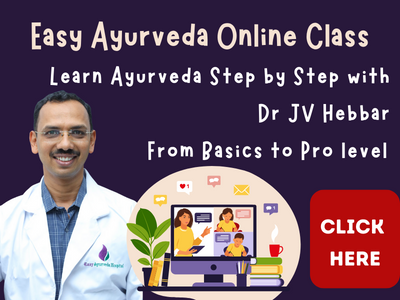Sushruta Samhita Chapter Sutrasthana 26: Pranashta Shalya Vijnaniyam Adhyaya (Knowledge of Foreign Bodies)
The 26th chapter of Sutrasthana of Sushruta Samhita is named as Pranashta Shalya VijnaniyamAdhyaya. This chapter deals with the Knowledge of Foreign Bodies.
अथातः प्रनष्टशल्यविज्ञानीयमध्यायं व्याख्यास्यामः ॥१॥
यथोवाच भगवान् धन्वन्तरिः ॥२॥
We will expound the chapter by name Pranata Shalya Vijnana- knowledge of foreign bodies lost (concealed) inside the body; as revealed by the venerable Dhanvantari.
Table of Contents
Shalya nirukti: Etymology
“शलू”, ’श्वलू’ आशुगमने धातू; तयोरद्यस्य शल्यमिति रूपम् ॥३॥
‘Sal’ and ‘Sval’ are the two verbal roots which mean ‘moving quickly’. The term ‘Shalya is derived from the first verbal root i.e. ‘Sal’.
(Quoting the other authorities, Acharya Dalhana, the commentator of Sushruta Samhita further clarifies this explanation and says that the root ‘Sval’ means ‘causing misery or pain’/ The term ‘Shalya is derived from the root word ‘Sval’ because Shalya too creates pain or trouble.)
Shalya Bheda: Kinds of foreign bodies
तद्वदिविधं शारीरमागन्तुकं ॥४॥
Shalya is of two kinds –
– Sharira – pertaining to body, derived from the body, internal
– Agantuka – coming from outside the body, externa
Shalya Shastra
सर्वशरीराबाधकरं शल्यं, तदिहोपदिश्यत इत्यतह् शल्यशास्त्रम् ॥५॥
As already said, ‘that which produces trouble and pain in the entire body is called Shalya. This science is known as ‘Shalya Sastra’ or science of foreign bodies since the details of Shalya have been described in this science (section).
तत्र शारीरं दन्तरोमनखादि धातवोऽन्नमलान्दोषाश्च दुष्टाः; आगन्त्वपि शरीरशल्यव्यतिरेकेण यावन्तो भावा दुःखमुत्पादयन्ति ॥॥।६॥।
Saririka Shalya (derived from the body itself) are –
– the teeth, hairs, nails etc.
– vitiated Dhatus (tissues) (upadhatu, mala, dhatumala etc are also included),
– waste products of food (urine, faeces etc) and
– aggravated Dosas,
Agantu Shalyas are –
– substances and emotions derived from outside the body
– those things other than those mentioned in Saririka Shalya and
– those which also produce pain and misery
Shalya Adhikara: Composition of foreign bodies
अधिकारो हि लोहवेणुवृक्षतृणश्रृङ्गास्थिमयषु; तत्रापि विशेषतो लोहेष्वेव, विशसनार्थोपपन्नत्वाल्लोहस्य; लोहानामपि दुर्वारत्वादणुमुखत्वाद्दुरप्रयोजनकरत्वाच्च शर एवाधिकृतः । स च द्विविधः कर्णी, श्लक्ष्णश्च,प्रयेण विविधवृक्षपत्रष्पफलतुल्याकृतयो व्याख्याताः; व्यालमृगपक्षिवक्रसदृशाश्च ॥७॥
Shalyas are (composed of) made from –
– metals,
– bamboo
– wood
– grass
– horns
– animal bones and
– especially from iron
Since it (iron) is used chiefly for slaughtering / to cause trouble (injury) the word Shalya is most often used exclusively to describe the instruments or weapons made up of iron (or instruments and weapons made up of iron alone are often called as Shalya).
Sara – Sara or arrow alone should be considered in this context even among the Shalyas made up of iron, if other things are not mentioned.
This is because –
– it is very difficult to pull out the arrow,
– since it creates a small mouth or orifice of entry into the body when it pierces through and
– can be readily thrown or hurled from a long distance (aiming the target)
It is of two kinds-
1. Karni- having an ear (ear like structure attached at its front) and
2. Slakshana (smooth rod like without any attachments)
Generally, the arrows are in the shapes of leaves, flowers and fruits belonging to different trees. They may alternatively resemble the shapes of the face or mouths of different wild animals or birds.
Shalyagati: Direction of movement of foreign bodies
सर्वशल्यानां तु महतामणूनां वा पञ्चविधो गतिविशेषः ऊर्ध्वमधोऽर्वाचीनस्तिर्यगृजुरिति ॥८॥
There are in total five Shalya gatis i.e. direction of movements of all foreign bodies, especially the arrow, immaterial of the Shalya being minute or big. Below mentioned are those five gatis of Shalya –
– Urdhwa gati – upward direction, from below upwards
– Adho gati – downward direction, from above downwards
– Arvachina gati – backward direction, from back to front
– Tiryak gati – sideward direction, oblique
– Ruju gati – straight direction, from front to back
Shalya Ashraya: Dwelling of foreign bodies
तानि वेगक्षयात् प्रतिघाताद्वा त्वगादिषु व्रणवस्तुष्ववतिष्टन्ते, धमनीस्त्रोतोऽस्थिविवरपेशीप्रभृतिषु वा शरीरप्रदेशेषु॥९॥
The Shalyas, mainly arrow get lodged in the below mentioned structures of the body due to the diminished force (of release) or obstruction –
– Skin and other medium of wounds i.e. tissues which are not the seats of wounds or
– Arteries
– Channels of the body
– Hollow of the bones
– Muscles or
– Other places of the body
Shalyaja Lakshana: Symptoms produced by foreign bodies
तत्र शल्यलक्षणमुच्यमानमुपधारय । तद्विविधं- सामान्यं, वैशेषिकं च । श्यावं पिडकाचितं शोफवेदनावन्तं मुहुर्मुहुः शोणितास्राविणं बुद्बदवदुन्नतं मृदुमांसं च व्रणं जानीयात् सशल्योऽयमिति; सामान्यमेतल्लक्षणमुक्तम्। वैशेषिकं तु- त्वग्गते विवर्णः शोफो भवत्यायतः कठिनश्चह् मांसगते शोफाभि(ति) व्रुद्धिः शल्यमार्गानुपसंरोहह् पीडनासहिष्णुता चोषपाकौ च ; पेश्यन्तरस्थेऽप्येतदेव चोषशोफवर्जं ; सिरागते सिराध्मानं सिराशूलं सिराशोफश्च; स्नायुगते स्नायुजालोत्क्षोपणं संरम्भश्चोग्रा रुक च; स्रोतोगते स्रोतसां स्वकर्मगुणहानि; धमनीस्थे सफेनं रक्तमीरयन्ननिलः सशब्दो निर्गच्छत्यङ्गमर्दः पिपासा हृल्लासश्च; अस्थिगते विविधवेदनाप्रादुर्भवः शोफश्च; अस्थिविवरगतेऽस्थिपूर्णताऽस्थिनिस्तोदह् संहर्षो बलवांश्च; सन्धिगतेऽस्थिवच्चेष्टोपरमश्च; कोष्ठगते आटोपानाहौ मुत्रपुरीषाहारदर्शनं च व्रणमुखत्;मर्मगते मर्मविद्धिवच्चे ष्टोपरमश्च; कोष्टगते आटोपानाहौ मूत्रपुरीषाहरदर्शनं च व्रणमुखात्; मर्मगते मर्मविद्धवच्चेष्टते। सूक्ष्मगतिषु शल्येष्वेतान्येव लक्षणन्यस्पष्टानि भवन्ति ॥१०॥
Hereafter, the symptoms produced by the Shalya – foreign bodies will be described, listen carefully. These symptoms can be classified as –
– Samanya lakshanas – general or common symptoms and
– Vaisesika / Vishesha lakshanas – specific or special symptoms
Samanya lakshanas – when the wound is associated with the below mentioned features it should be understood as having a foreign body inside it. Here, the wound –
– is blue (blackish blue),
– is studded with eruptions,
– has swelling and pain,
– exudes blood frequently,
– is bulged up like a bubble,
– the muscles are soft
These are the common / general symptoms.
Vaisesika Lakshanas – Below mentioned are the special symptoms produced by Shalyas –
| Seat of lodgement of Shalya – foreign body | Symptoms produced |
| Twak – Skin | Change in skin colourSwelling is broad and hard |
| Mamsa – Muscles | Increase of swellingAppearance of new growth in the direction of ShalyaIntolerance to pressing i.e. tendernessSucking type of painSuppuration – formation of pus |
| Peshyantara – Muscle sheaths | Same symptoms mentioned above (muscles) except sucking pain and swelling |
| Sira – Veins | Distension of veinsPain in the veinsSwelling of the veins s |
| Snayu – ligaments | Shaking of network of ligamentsSevere swellingSevere pain |
| Srotas – channels and ducts | Destruction of qualities and functions of the related channels |
| Dhamani – arteries | Discharge of frothy blood associated with sound, pain all over the body, thirst and nausea as caused by aggravated vata |
| Asthi – bones | Various kinds of pains and swelling |
| Asthi vivara – Cavity of bones | Filling of bone cavitiesPricking pain in the bonesSevere restlessness orSevere friction / rubbing |
| Sandhi – bony joints | Similar to Shalya lodged in bones (as explained above) andLoss of functions of the affected joints |
| Koshta – alimentary canal | Gurgling noiseFlatulenceAppearance of urine, faeces, food particles – from the wound opening |
| Marma – vital spots | Symptoms of injury of that marma manifests when movements are done |
| Suksma gati Shalya – Minute Shalyas lodged in the body / Shalyas lodged in small areas or orifices | Symptoms are present but are not clearly manifested |
Curable wounds with foreign bodies in them
महान्त्यल्पानि वा शुद्धदेहानामनुलोमसन्निविष्टानि रोहन्ति, विशेषतः कण्ठस्त्रोतः सिरात्वक्पेश्यस्थिविवरेषु; दोशप्रकोपव्यायामाभिघाताजिर्णेभ्यः प्रचलितानि पुनर्बाधन्ते ॥११॥
The wound caused by big or small Shalyas, especially those present in the passages of throat, skin, muscles and bone cavities get healed –
– when present in the patient whose body is not vitiated by the aggravation of doshas i.e. the body is pure,
– when Shalya has entered from above downward i.e. in the direction of the hair and has stayed in the same direction,
The Shalya produces trouble in the body again when it gets dislodged from its place due to –
– aggravation of doshas,
– exercise,
– injury and
– indigestion
Shalyasthanaa Jnanodaya: Determining the site of foreign body
तत्र, त्वकप्रष्टे स्निग्धस्विन्नायां मृन्माषयवगोधूमगोमयमृदितायां त्वचि यत्र संरम्भो वेदना वा भवति तत्र शल्यं विजानीयात्, स्त्यानघृतमृच्चन्दनकल्कैर्वा प्रदिग्धायां शल्योष्मणाऽऽशु विसरति घृतमुओअशुष्यति चालेपो यत्र तन्त्र शल्यं विजानीयात्; मांसप्रनष्टे स्नेहस्वेदादिभिः क्रियाविशेशैरविरुद्धैरातुरमुपपादयेत्, कर्शितस्य तुशिथिलीभूतमनवबद्धं क्षुभ्यमाणं यत्र संरम्भं वेदनाम् वा जनयति तत्र शल्यं विजानीयात्, कोष्ठास्थिसन्धिपेशीविचरेष्व वास्थितमेवमेव परीक्षेत; सिराधमनीस्त्रोतः स्नायुप्रनष्टे खण्डचक्रसंयुक्ते याने व्याधितमारोप्याशु विषमेऽध्वनि यायात्, यत्र संरम्भो वेदना वा भवति तत्र शल्यं विजानीयात्, अस्थिप्रनष्टे स्नेहस्वेदोपपन्नान्यस्थीनि बन्धनपीडनाभ्यां
भृशमुपाचरेत्, यत्र संरम्भो वेदना वा भवति भत्र श्ल्यं विजानीयात्, सन्धिप्रनष्टे स्नेहस्वेदोपपन्नन् सन्धीन् प्रसरणाकुञ्चनबन्धनपीडनैर्भृशमुपाचरेत् ; यत्र संरभो वेदना वा भवति तत्र शल्यं विजानीयात्;मर्मप्रनर्ष्ट त्वनन्यभावान्मर्मणामुक्त्ं परीक्षणं भवति॥१२॥
The body should first be anointed with oils and then fomented when the Shalya is lost or concealed in the skin. Following this, the paste of mud, flour of masa – black gram, yava – barley and godhuma – wheat or gomaya – cow dung shall be applied and rubbed on the skin. The site wherein swelling, redness and pain developed due to rubbing of these medicaments should be considered as the site of lodgement of the foreign body.
Similarly when a lump of solid ghee or paste of mud or Candana (sandalwood) is applied on the body, the place where the ghee melts and spreads of and the paste (of mud and sandalwood) dries up quickly by the heat of the foreign body (heat produced in that site due to the presence and lodgement of a foreign body) is to be understood as the site of lodging.
Snehana – oleation, Swedana – sudation and other therapies which are not harmful or mutually contradictory shall be administered when the Shalya is lost or concealed in the muscles. In emaciated individuals the place or site wherein the foreign body which has become loosened, non-sticking i.e. displaced from its site and gets agitated and gives rise to redness and swelling or pain should be considered to be having the foreign body (site of presence of foreign body).
The place of location of Shalya should be determined by the above-mentioned methods only, when it is lodged in the alimentary tract, bony joints, vacant spaces in the muscles and bones.
When the foreign body has been concealed (lodged) in sira (veins), dhamani (arteries), srotas (channels and passages) and snayu (ligaments), he or she should be made to sit on a cart, the wheel of which is broken and the cart be made to run on an irregular road. The place of the body which develops swelling and pain should be considered to be having a foreign body concealed inside it.
When the foreign body is lost / concealed in the bone, the patient should be given oleation (anointing) and fomentation (sudation) and then the bones should be tied with bandages tightly or squeezed hard. The place where redness, swelling or pain develops should be determined as the site of the foreign body (place where the foreign body is concealed).
When the foreign body is concealed in the bony joints of the body, the joints should be administered with oleation and sudation first. Then flexion, extension, bandaging and pressure / pressing etc should be done on these joints. The place in which swelling and pain develops should be considered to be having Shalya i.e. foreign body concealed in it.
Marmas i.e. vital spots are not other than the tissues mentioned above. Marmas are also made up of the same tissues and structures. Therefore, the same methods described so far shall be adopted to determine the site of lodgement of Shalyas, when the Shalya is concealed or lost in these marmas.
Common methods to determine the site of the foreign body
सामान्यलक्षणमपि च हस्तिस्कन्धाश्वपृष्ठपर्वतद्रुमारोहणधनुर्व्यायामद्रुतयाननियुद्धाध्वगमनलङ्घनप्लवनप्रतरणव्यायामैर्जृम्भोद्रारकासक्षवयुष्ठीवनप्रतरणव्यायामैर्जुम्भोद्रारकाक्षवथुष्ठीवनहसनप्राणयामैर्वातमूत्रमूत्रपुरीषशुक्रोत्सर्गैर्वा यत्र संरम्भो वेदना वा भवति तत्र शल्यं विजानीयात् ॥१३॥
Common methods of determining the site of the foreign body are as explained below. The place where swelling or pain develop during the below mentioned activities should be understood as the site of the foreign body (place of the body where the foreign body is concealed) –
– riding on an elephant or a horse,
– climbing a hill or a tree,
– bending a bow,
– exercise,
– walking fast,
– wrestling,
– walking long distance,
– long jumping / high jumping,
– swimming,
– jumping high,
– yawning,
– belching,
– coughing,
– sneezing,
– spitting,
– laughing,
– controlling breathing,
– eliminating of flatus, urine, faeces or semen
भवन्ति चात्र:-
यास्मिंस्तोदादयो देशे सुप्तता गुरुताऽपि च ।
घट्टते बहुशो यत्र शूयते रुज्यतेऽपि च ॥१४॥
आतुरश्चापि यं देशामभीक्ष्णं परिरक्षति ।
संवाह्यमानो बहुशस्तत्र शल्यं विनिर्दिशेत् ॥१५॥
Some verses here:-
The place of the body wherein pricking and other types of pain appear, and where numbness / absence of sensation and feeling of heaviness are present, the place wherein discharges and pricking pain occurs when rubbed or scratched, the place of the body which the patient himself protects excessively and constantly, and the place of the body which the patient presses constantly should be understood as the site of the foreign body (wherein the foreign body is concealed).
NisShalya Sthana: Place free from foreign body
अल्पाबाधमशूनं च नीरुजं निरुपद्रवम् ॥
प्रसन्नं मृदुपर्यन्तं निराघट्टमनुन्नतम॥ १६॥
एषण्या सर्वतो दृष्ट्वा यथामार्गं चिकित्सकः ॥
प्रसाराकुञ्चनान्नूनं निःशल्यमिति निर्दिशेत ॥१७॥
The physician shall consider (declare) any place free of foreign body (foreign body has been removed or expelled) when the below mentioned features are present –
– the place having mild troubles,
– the place having no swelling, no pain, no complications,
– the place is clean (without change of colour) and soft all around,
– the place is static (without any unusual movements),
– the place is not elevated,
– the place is searchable thoroughly by probing in all sides through the passage of entry,
– not having any difficulty for extension and contraction (and other movements also)
Shalya gati: Fate of foreign bodies inside
अस्थ्यात्मकं भज्यते तु शल्यमन्तश्च शीर्यते ।
प्रायो निर्भुज्यते शार्ङ्गमायसं चेति निश्चयः ॥१८॥
वार्क्षवैणवतार्णनि निर्ह्रियन्ते तु नो यदि ।
पचन्ति रक्तं मांसं च क्षिप्रमेतानि देहिनाम् ॥१९॥
कानकं राजतं ताम्रं रैतिकं त्रपुसीसकम् ॥।
चिरस्थानाद्विलीयन्ते पित्ततेजः प्रतापनात् ॥२०॥
स्वभावशीता मृदवो ये चान्येऽपीदृशा मताः ॥
द्रवीभूताः शरीरेऽस्मिन्नेकत्वं यान्ति धातुभिः ॥२१॥
विषाणदन्तकेशास्थिवेणुदारुपलानि तु ॥
शल्यानि न विशीर्यन्ते शरीरे मृन्मयानि च ॥२२॥
Below mentioned is the fate of Shalyas made up of different materials after entering the body, beyond any doubt –
– Shalyas comprising of bone – either get broken or split into small pieces inside the body
– Shalyas comprising of horns of animals and iron – wound bend inside the body
– Shalyas which are wood, bamboo grass – will cause suppuration of blood and muscles, when not extracted quickly
– Shalyas made of gold, silver, copper, brass, tin and lead – get dissolved and absorbed at the same place of their lodgement, by the heat of pitta, when they stay for long time in the body
– Shalyas which are cold and soft by nature (and also have similar such qualities) – would liquify inside the body and get mixed with the tissues therein
– Shalyas in the form of horn, teeth, hair, bone, bamboo, wood, stone and mud – will not get destroyed inside the body and will remain so
द्विविधं पञ्चगत्वगादिव्रणवस्तुषु॥
यो वेत्ति विष्टितं श्ल्यं स राज्ञः कर्तुमर्हति ॥२३॥
The physician will be entitled to treat the king only when he understands –
– two kinds of Shalya
– five directions of entry of Shalyas
– symptoms produced by the Shalyas in the skin and other seats of wounds
इति श्रीसुश्रुतसंहितायां सूत्रस्थाने प्रनष्टशल्यविज्ञानीये नाम षड् शिंतितमोऽध्यायः ॥२६॥
Thus ends the Twenty-sixth chapter by Name Prasanta Shalya Vijnaniya in Sutra Sthana of Susrutha Samhita.









